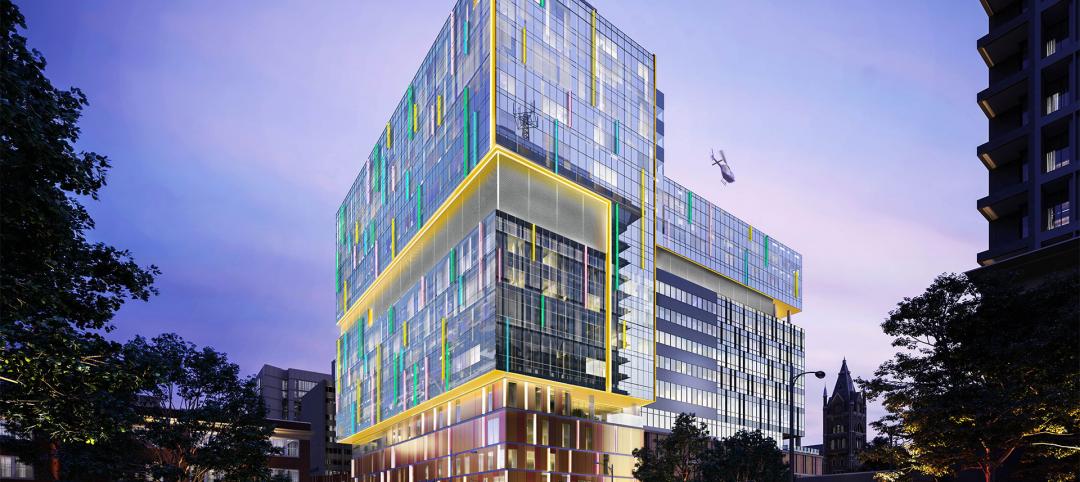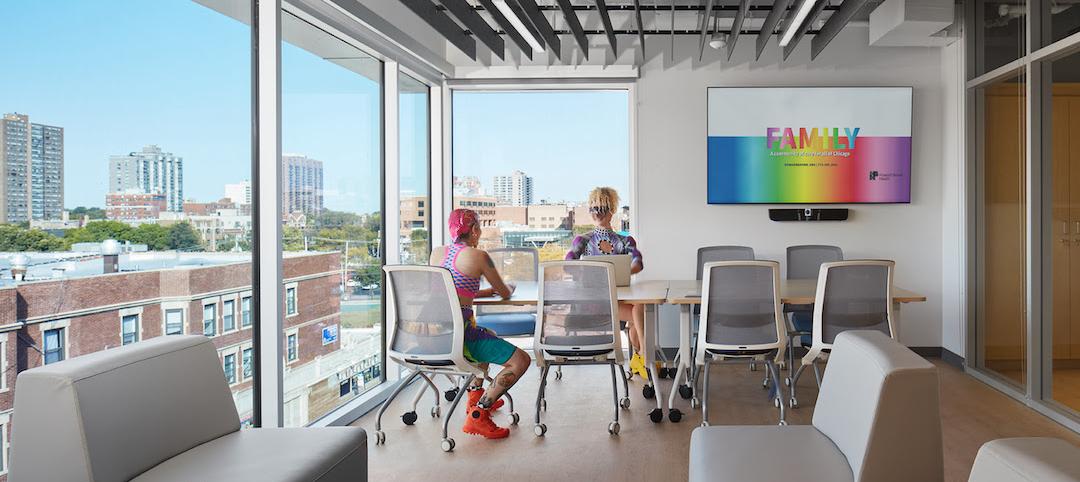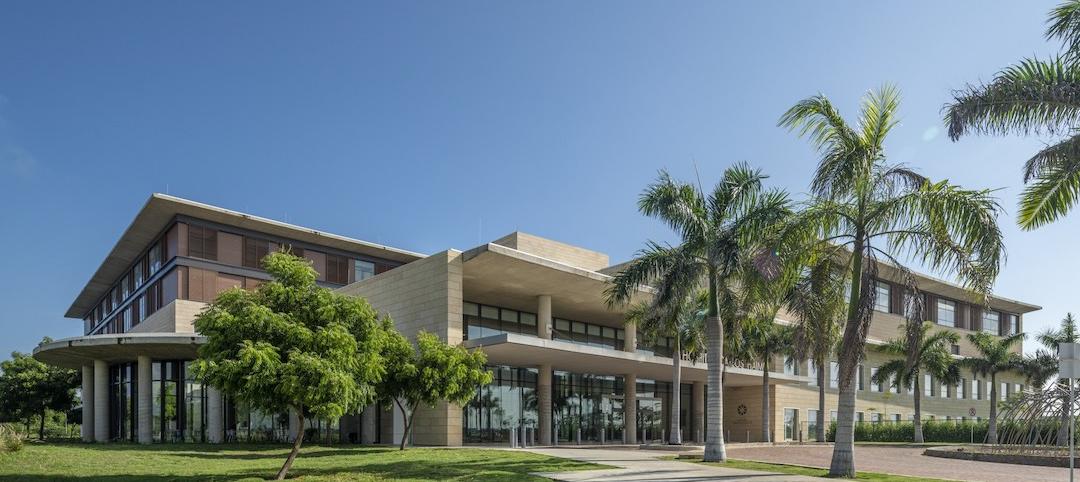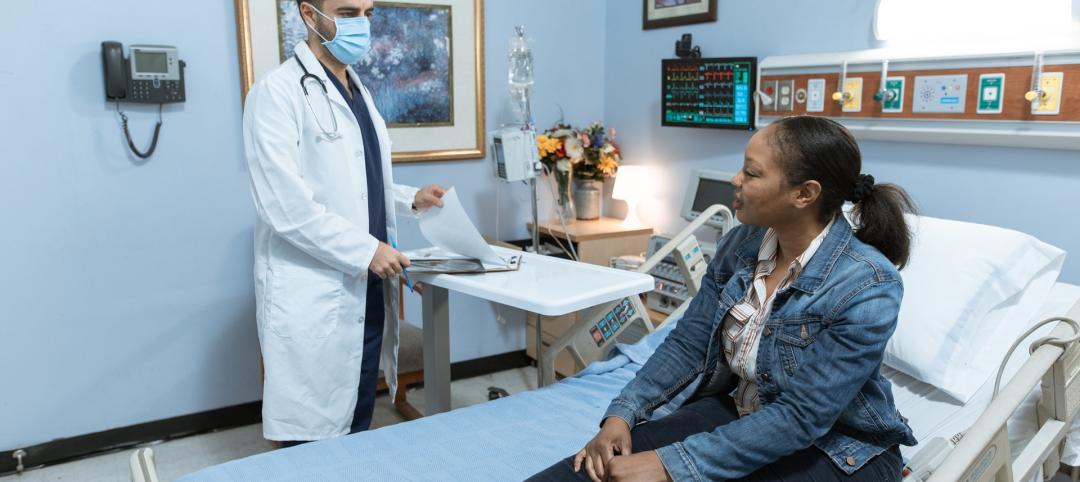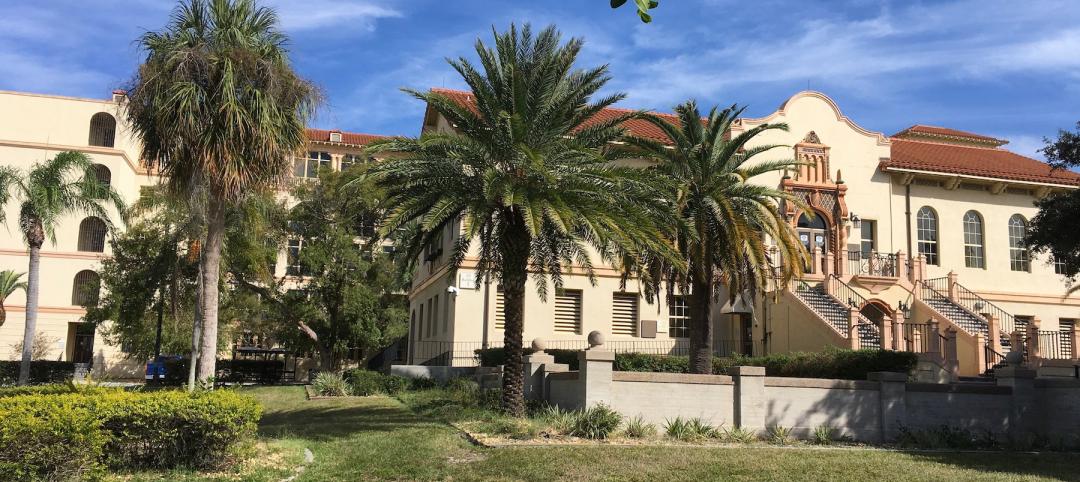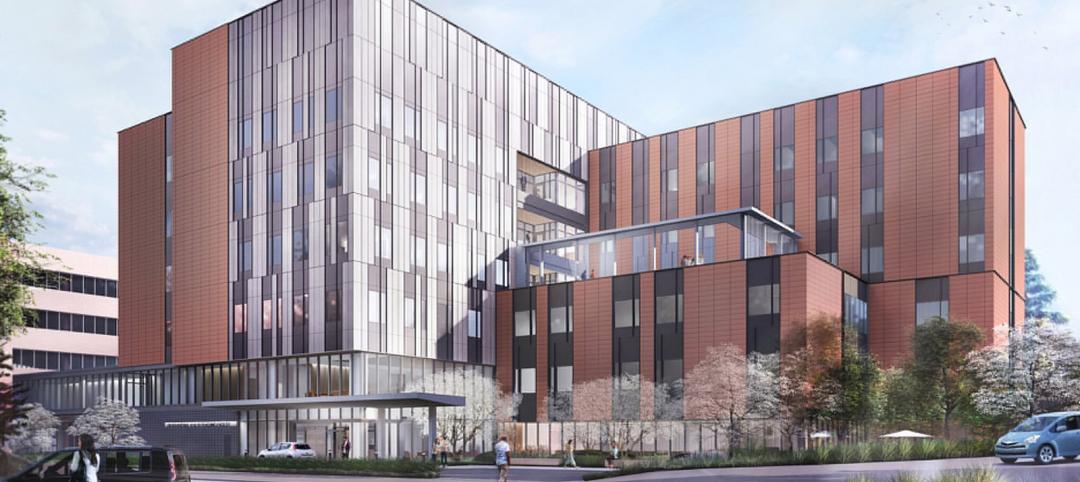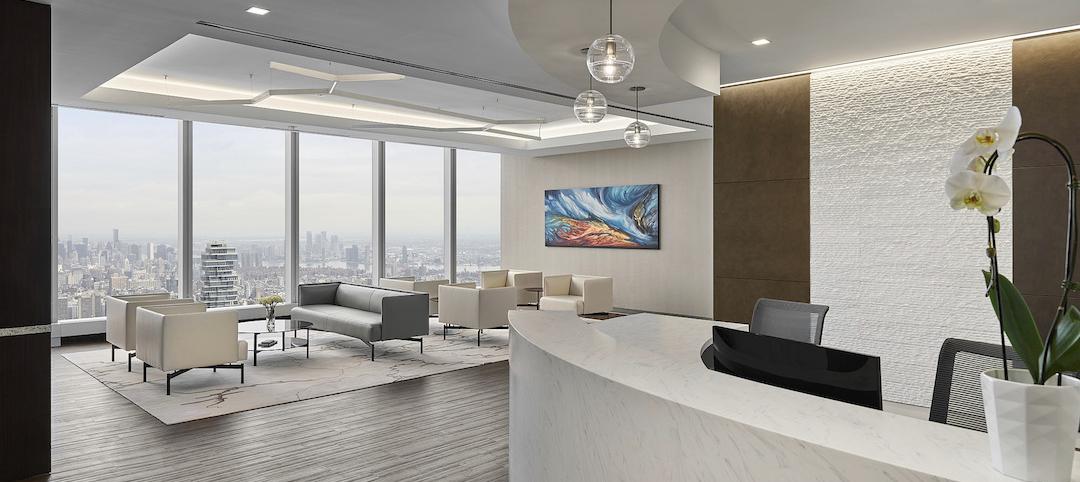Faced with the complexities of value-based payment models and the uncertainties surrounding healthcare reform, the nation's healthcare delivery systems are taking the long view of their operations.
“They're looking at everything from organizational structures, staffing, and services, all the way down to the cost of building and operating a facility,” says Mike Zorich, PE, LEED AP, Client Executive with engineering firm IMEG.
Case in point: Boston Medical Center's multi-year campus consolidation will trim its footprint by 60 beds and 329,000 sf, saving $25 million a year in operating costs.
See also: Top 160 Healthcare Architecture + AE Firms - 2018 Giants 300
See also: Top 90 Healthcare Engineering + EA Firms - 2018 Giants 300
See also: Top 105 Healthcare Construction + CM Firms - 2018 Giants 300
Academic medical centers are also modernizing. The IPD team for Sutter Health’s California Pacific Medical Center, San Francisco—which includes SmithGroupJJR, Boulder Associates, and HerreroBOLDT—is building two replacement hospitals, closing an existing campus, and converting another one from inpatient to outpatient care.
“We are quickly transitioning from patient-centered to patient-driven care,” says Heather Chung, EDAC, LEED AP, VP/Health Studio Leader, SmithGroupJJR. “Patients are changing what it means to be accessible and convenient and are shaping what healthcare providers deliver.”
“The healthcare market continues to reach further into communities and away from the traditional hospital for many front-line services,” says IMEG’s Zorich. “Healthcare buildings used to be designed for more than 50-year life spans, but many of the smaller off-campus outpatient facilities are now looking at 20 years or less.”
An emphasis on reducing costs and improving efficiency is fueling the use of Lean construction and prefabrication.
Prefab helped Skanska shave more than $200,000 in construction costs off a 444,000-sf hospital expansion at the University of Virginia Health System, Charlottesville. “Laser scanning identified opportunities for the prefabrication of materials alongside critical in-place infrastructure that could not be interrupted,” says Andrew Quirk, Senior Vice President and National Director of Skanska USA’s Healthcare Center of Excellence.
AEC firms are also stepping up the use of VR and AR tools. “Not only can VR and AR help our clients understand department layouts, adjacencies, workflows, and finishes during the design process, but clients can continue to use these tools to maintain and operate their facilities more efficiently,” says Mike Stapf, Vice President, Design Integration, McCarthy Building Companies.
doubling down ON RESILIENCE, collaboration
Resilience is guiding the design of healthcare facilities, particularly in regions vulnerable to extreme emergency events. “Healthcare facilities need to maintain services during and after extreme events, and this drives priorities in a very different direction than before,” says Pat Bosch, LEED AP, Design Director, Perkins+Will, Miami.
In South Texas, P+W is leading the expansion of Christus Spohn Hospital Corpus Christi–Shoreline, a pilot project using the RELi rating system. RELi helps project teams plan for hazards and emergencies that could cut power and heat or compromise a building’s functionality.
The hospital's leaders recognized the facility's role as a regional command center in the event of a natural disaster or terrorist threat and as a place of refuge. "They identified resilient design as a top priority," says Julie Frazier, Associate Principal, Perkins+Will, Dallas.
Masonry skin, impact-resistant glazing, and galvanized exposed metals will protect the 10-story structure during extreme events. If HVAC systems are knocked out of service, reflective roof surfaces will minimize heat gain; sun-shading devices will filter natural sunlight on patient floors. Several days' provision of food and water will be stocked.
Another new healthcare design trend: translational medicine, which brings researchers and clinicians under the same roof to hasten discoveries that accelerate individualized patient treatments.
“Just as the AIDS epidemic needed a new way of thinking, cancer care and clinical care in general need a new way to take advantage of advanced technology and research methods to deliver innovative, personalized care and treatment for their patients,” says Hank Adams, AIA, ACHA, EDAC, Global Director of Health at HDR.
Transdisciplinary integration is breaking down the physical and organizational barriers that have traditionally separated these areas, to speed up the development of life-saving therapies.
“The merging of patient care, education, and science into one contiguous platform is the future of academic medicine,” says Scott Rawlings, AIA, FACHA, LEED AP, Director of Healthcare with HOK.
“Leading institutions are finding that focusing superspecialties into one building that combines clinical care, trials, research, and education enables them to quickly translate basic research findings into prevention and treatment and to enhance patient care,” says Rawlings.
Related Stories
Healthcare Facilities | Dec 15, 2021
COVID-19 has altered the speed and design of healthcare projects, perhaps irrevocably
Healthcare clients want their projects up and running quicker, a task made more complicated by the shortage of skilled labor in many markets.
Healthcare Facilities | Dec 15, 2021
MEP design considerations for rural hospitals
Rural hospitals present unique opportunities and challenges for healthcare facility operators. Oftentimes, the infrastructure and building systems have not been updated for years and require significant improvements in order to meet today’s modern medical demands. Additionally, as these smaller, more remote hospitals are acquired by larger regional and national healthcare systems, the first step by new ownership is often to update and rehabilitate the building. But how can this be done thoughtfully, economically, and efficiently in ways that allow the engineering and facility staff to adapt to the changes? And how can the updates accurately reflect the specific needs of rural communities and the afflictions with which these areas most commonly face?
Healthcare Facilities | Dec 7, 2021
Wheeler Kearns Architects completes Howard Brown Health’s Broadway Youth Center in Chicago
The new facility will provide medical and social service programs to LGBTQI+ youth.
Healthcare Facilities | Nov 23, 2021
Why vertical hospitals might be the next frontier in healthcare design
In this article, we’ll explore the opportunities and challenges of high-rise hospital design, as well as the main ideas and themes we considered when designing the new medical facility for the heart of London.
Healthcare Facilities | Nov 12, 2021
Centro Hospitalario Serena Del Mar is Safdie Architects’ first project in Latin America
The hospital project is characterized by its connectivity to nature.
Healthcare Facilities | Nov 2, 2021
Key design considerations for designing the smart patient room
The complete patient experience encompasses the journey to the hospital, the care experience, and the trip back home. All these touchpoints come with an expectation.
Cladding and Facade Systems | Oct 26, 2021
14 projects recognized by DOE for high-performance building envelope design
The inaugural class of DOE’s Better Buildings Building Envelope Campaign includes a medical office building that uses hybrid vacuum-insulated glass and a net-zero concrete-and-timber community center.
Healthcare Facilities | Oct 22, 2021
The VA is updating what once was the main hospital on a Florida medical campus
The renovated Building One will provide outpatient services.
Healthcare Facilities | Oct 21, 2021
UW Medical Center starts construction on Behavioral Health Teaching Facility
Will add much-needed patient bed capacity for Seattle.
Healthcare Facilities | Oct 20, 2021
Ware Malcomb completes Princeton Longevity Center at 1 World Trade Center
The project is located on the 71st floor.



